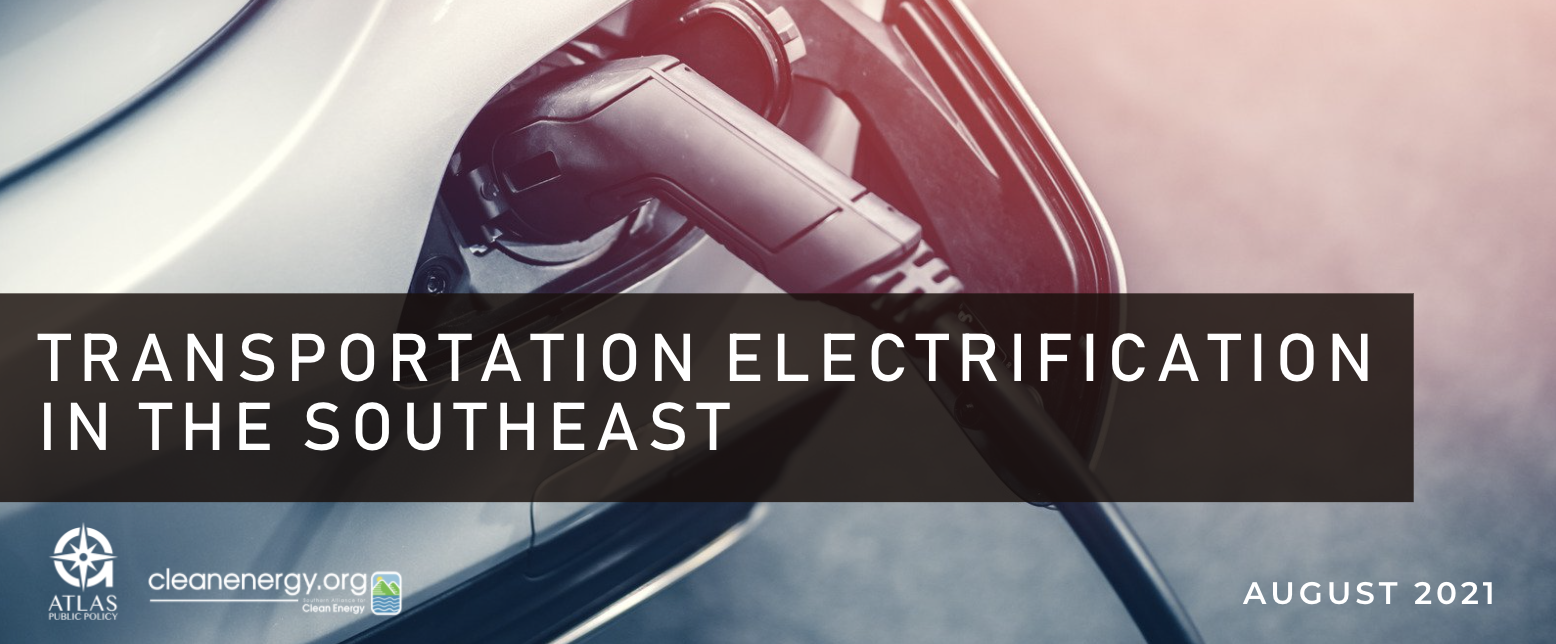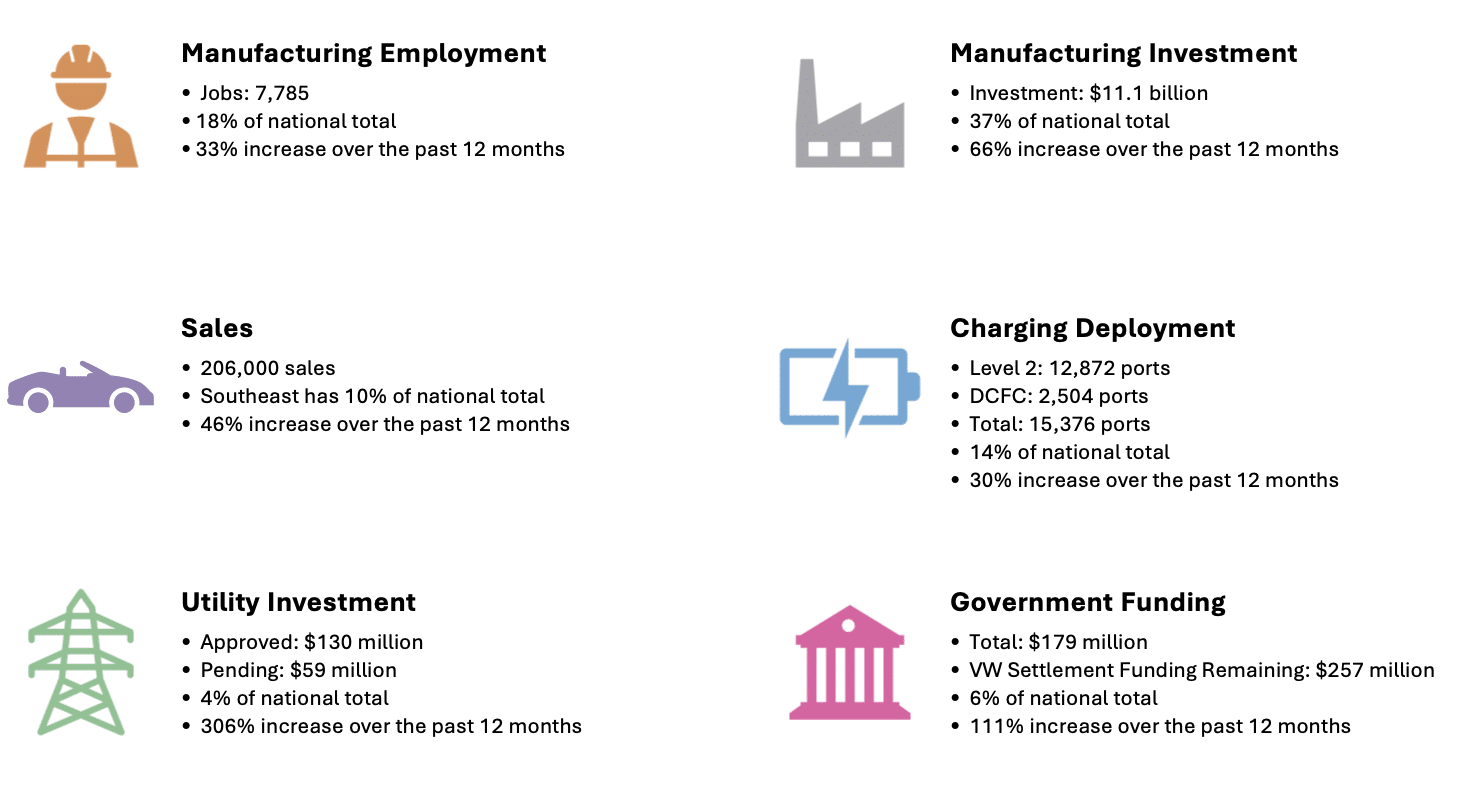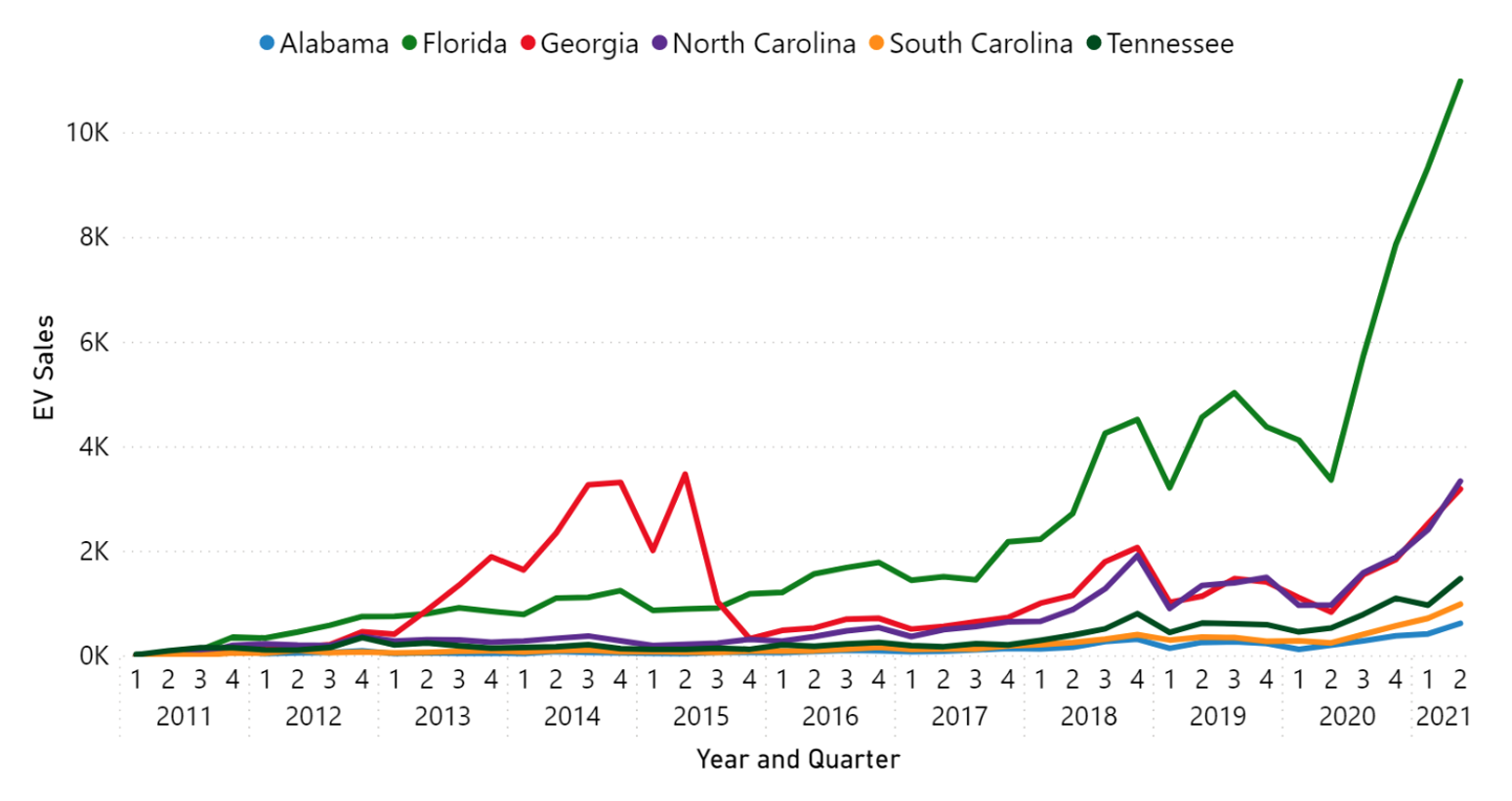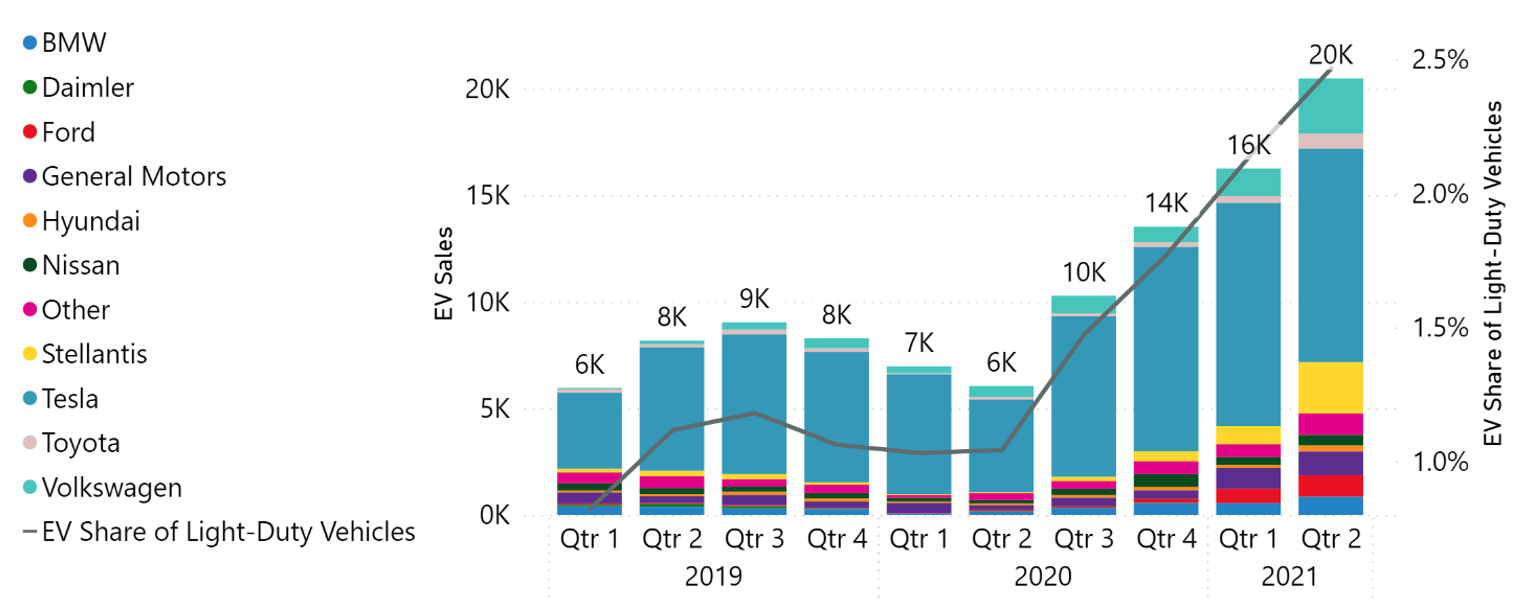The Southeast has secured significant electric vehicle (EV) investment over the past year, added additional jobs, increased EV sales and charger deployment, and ramped up utility engagement and state funding.
Stan Cross | August 31, 2021 | Clean Transportation, Electric Vehicles, UtilitiesA report by the Southern Alliance for Clean Energy (SACE) and Atlas Public Policy, “Transportation Electrification in the Southeast,” shows impressive gains across many market indicators. The report is the second annual look at market trends, state policies, and electric utility actions across Alabama, Georgia, Florida, North and South Carolina, and Tennessee.

Download the Report
Watch the Report Webinar
View State Pages
Moving in the Right Direction, But Still Behind
These six Southeast states account for 18% of the nation’s population and represent an outsized percentage of America’s EV manufacturing jobs, at 18% of the national total, as well as a whopping 37% of national manufacturing investment. The Southeast is emerging as an EV and supply chain manufacturing powerhouse; however, although EV sales, charging deployment, utility investment, and government funding showed impressive growth over the past year, the region remains an EV adoption laggard.
Southeast EV Market Indicators

What is clear is that the region’s EV-related economic development strength has great potential to be leverage for – and enhanced by – increasing adoption of EV fleets and consumer vehicles. Our report highlights supportive public policies and funding opportunities that have successfully expanded EV adoption in other parts of the country and provides examples of the connection between electric utility engagement and market activity. Getting policies and reforms right and targeting prudent investment will help ensure the Southeast maintains its competitive advantage. Doing so will also attract more EV manufacturing investment and job growth opportunities and support the industry’s many regional supply chain companies, including charging infrastructure deployment, battery production, and mineral mining.
Additionally, when comparing driving on gas and diesel versus electricity, diving electric saves consumers and states a lot of money while retaining more fuel spending in the region. As shown in another new SACE analysis, “Retained Transportation Fuel Spending in the Southeast: Electric Vs Internal Combustion Vehicles,” electrifying 100% of the region’s cars, trucks, and buses would add upwards of $47 billion to the regional economy annually.
Where the Rubber Meets the Road
At the end of the day, more manufacturing investment will flow and jobs will be created if the Southeast becomes a hotbed for EV adoption. The good news is that across all states, the trends are pointing in the right direction.
New EV Sales in the Southeast Over Time

In addition to the supportive public policy, regulatory reform, and funding highlighted in the report, strong market growth is also dependent on auto manufacturers making the EVs that consumers want and fleets need, as well as increasing consumer and fleet awareness to understand why and how to go electric. The excitement surrounding the impending releases of the Rivian R1T and Ford F-150 Lightning electric pickup trucks (Ford has so much pre-launch demand that it has already doubled production targets) is an example of how expanding beyond electric sedans and crossovers will bring a wider range of consumer and fleet managers into the showroom serious about purchasing an EV.
Tesla still dominates the light-duty EV market, but nearly every major automaker is bringing vehicles to market, gaining market share, and making bold commitments to go all-electric by the early-to-mid 2030s. The Biden administration is attempting to accelerate the sales of passenger EVs, electric buses, and trucks through executive order and legislation, including the bipartisan infrastructure bill that currently includes 26.7 billion in EV funding, which has the support of major automakers, the United Auto Workers union, and many environmental advocates.
EV Sales for the Southeast Since 2019

The Bottom Line
As the report concludes, “There are many growth areas for the EV industry, with the Southeast especially primed to benefit from an expanding, domestic manufacturing sector. EV sales continue to grow strongly across the region, and utilities are increasing investments in EV charging infrastructure to support that growth in sales. Volkswagen Settlement money awarded has also grown over the past 12 months, with significant funding still available to invest in transportation electrification. The Southeast continues to attract some of the largest battery and EV manufacturers in the world leading to jobs and investment. Broadly, transportation electrification has the potential to deliver economic, health, and environmental benefits to the region.”
The report also points out the need for an equitable and accessible electric transportation future. Equity considerations are crucial to ensure the affordability of EVs and access to charging infrastructure for all. To achieve equitable access, traditionally underrepresented communities, including Black, Indigenous, People of Color (BIPOC), Low to moderate-income (LMI), and rural communities, need to be at the policy and program planning tables early and often and be provided agency to shape the goals and outcomes that will impact their mobility future.
The report also highlights the lack of equity and accessibility data currently available. Without metrics developed in collaboration with BIPOC, LMI, and rural communities, the industry cannot ensure that policies and investments deliver equitable outcomes, no matter how well-intentioned. “The benefits of EVs – to consumers through savings, to communities through pollution reduction, and economic benefits to the region – must be shared by all.”
Download the Report
Watch the Report Webinar
View State Pages
Electrify the South is a Southern Alliance for Clean Energy program that leverages research, advocacy, and outreach to promote renewable energy and accelerate the equitable transition to electric transportation throughout the Southeast. Visit ElectrifytheSouth.org to learn more and connect with us.